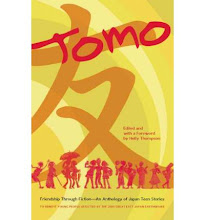Two weekends ago was the Japan Writers Conference. I'm going to be highlighting some of the presentations that I attended.
DEVELOPING PLAUSIBLE ALIENS by Dale Thomas ( who writes as Alex Sivier)
I'll be honest, I went to this presentation because my presentation had been in the same room right before. But I'm glad I stayed. I probably learned the most for the conference at this presentation.And even though Dale was talking specifically about aliens, I felt like you could use his guidelines in developing any society/creature you imagine.
Dale talked about how we're fascinated with a bi-pedal humanoid structure, but really there's nothing innately special about it. It's just that's what we look like. While I'm obviously not a believer in Evolution as a creation theory, I could see how evolution theory would make sense in creating races on another planet. For example, giraffes developped long necks in response to trees being tall. Wouldn't it make more sense for the aliens to develop because of their environment?
He also spoke of different types of selection: natural, sexual, kin, etc. (At this point, he made the hilarious comment that "Peahens like big tails!") In sexual selection, weaker/less pretty individuals die off, because noone chooses them as a mate, and this is how the species becomes stronger and prettier. How does your alien race evolve?
He also spoke of diversity in alien worlds. Earth has at least 3 racial categories. Further to that, all of those have subsets. On top of which, there are continents and countries. People look differently and act differently. Yet, pretty much every alien planet in Star Trek sports one race who all look alike and all revere the same things.
But it's not just humans that need to be diverse. The planet should also be diverse. Different locales should have different traits. Plants should be diverse, as well as animals.
Dale also touched on the biology of changing the scale of creatures. It got a little technical here, but I'll keep it simple. (I only understood it simply.) Certain traits are dependent on surface area, and some on volume. Like heat loss, is all about exposed surface area, but heat generation is about volume. (Think about how skinny people are always cold.) So if you shrank a human down to the size of your finger, then they'd have to eat constantly to generate enough heat not to die.
Also, when you double length, you quadruple surface area, and end up with 8 times the volume. So if you make something twice as tall, then its weight distribution and it's weight are affected. But weight is a volume factor, so it's now 8 times as heavy, but it's feet are only 4 times the area. Chances are this creature would fall over or have some kind of arthritis or something.
Dale divided literary (and screen) aliens into 5 categories:
1. totally human
2. modified humans (think Superman)
3. modified animals
4. bio-inspired
5. totally alien
His parting comment stuck with me. Showing a collage of good and bad facets of human society, he said something to this effect, "Alien culture should have things to be proud of and ashamed of."
Does your writing include imaginary races or societies, alien or otherwise? How do you go about constructing them?
Remnants and Revelations
6 years ago













No comments:
Post a Comment